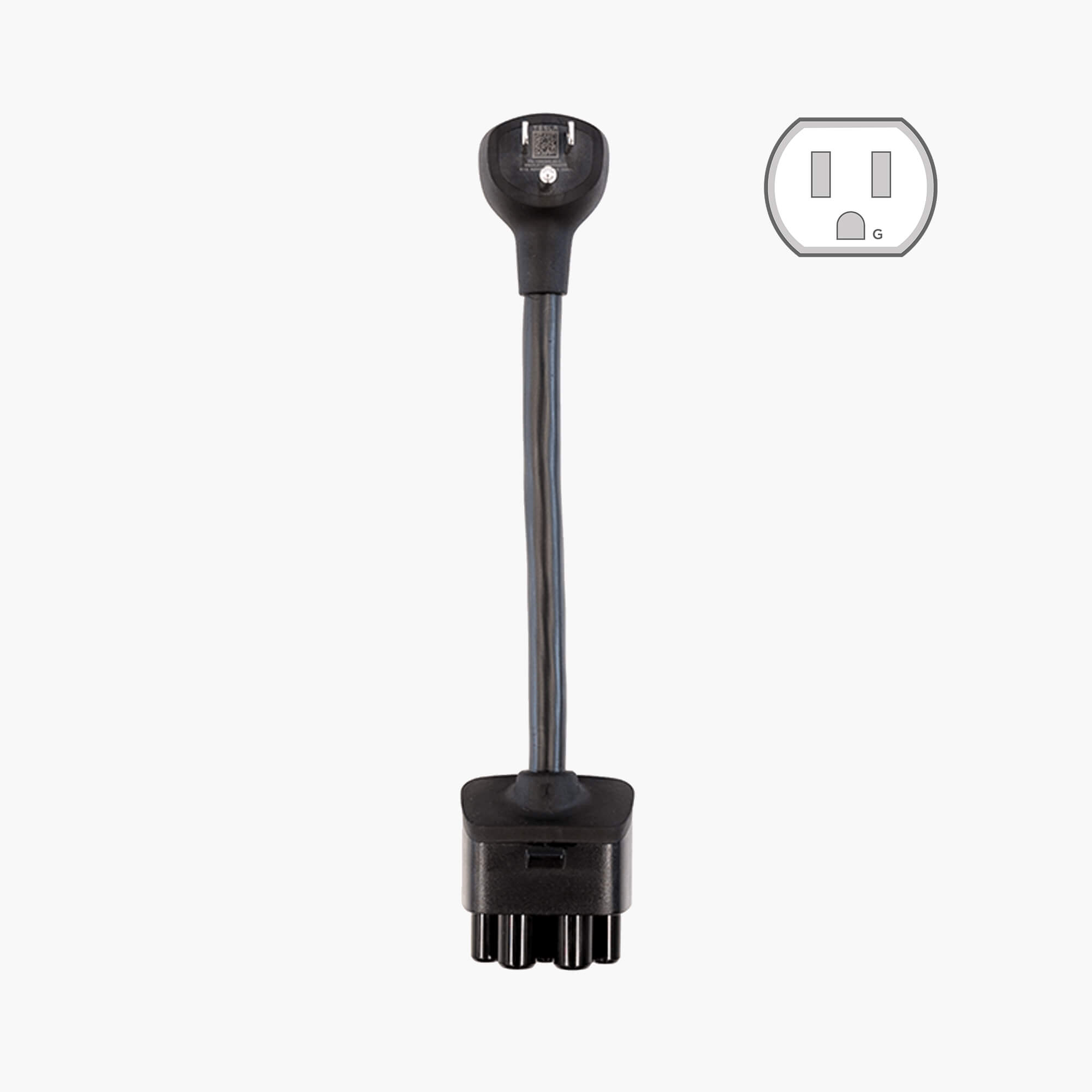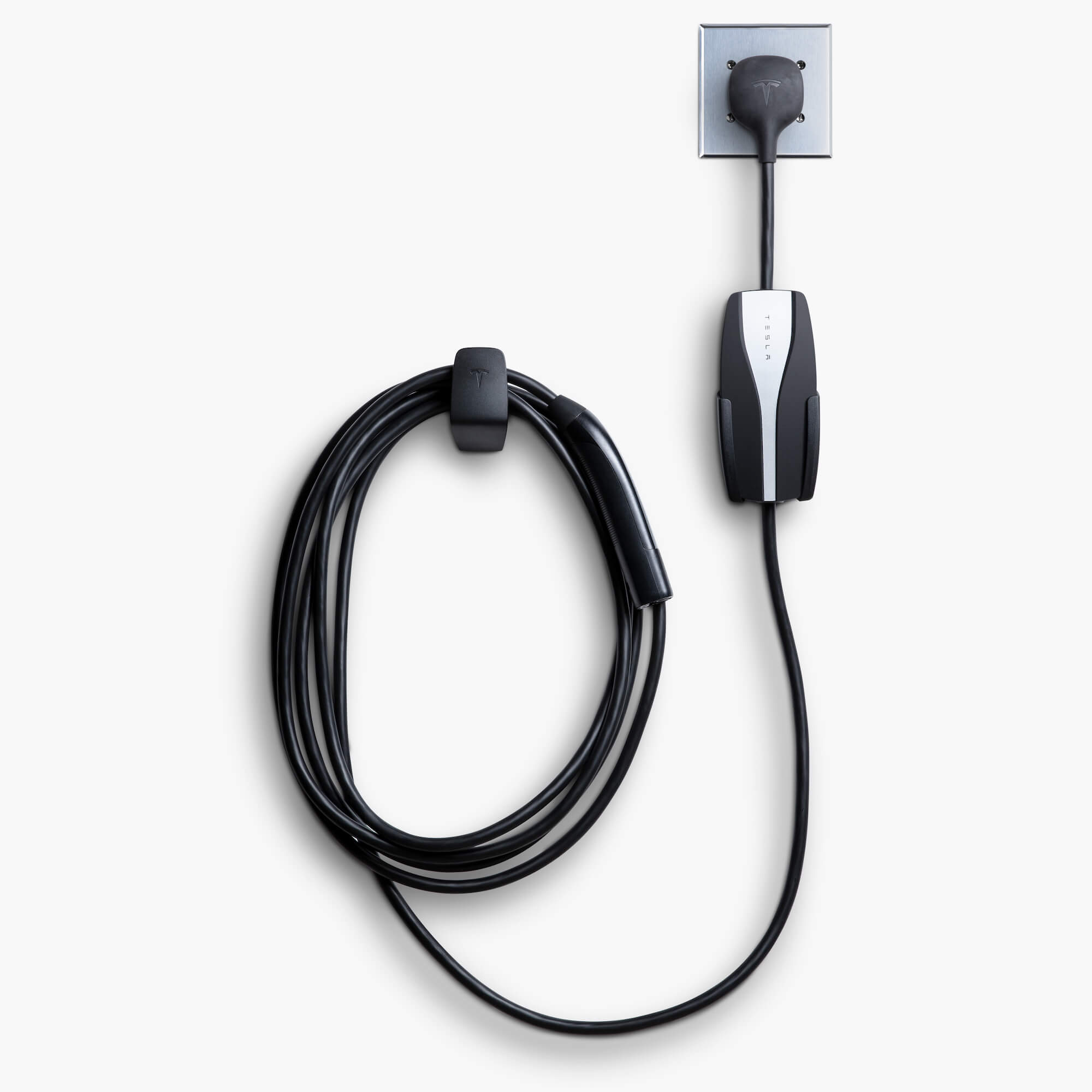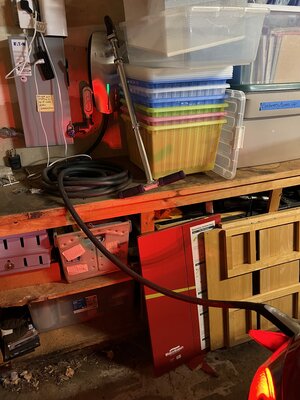Hey dude, I'm going to C&P - and slightly edit down - my [already] long winded replies to
@rdrr ...

Note the bold.
At home you can use a 120v (Level 1) but clearly if you can accommodate a 240v Level 2 it's much better. L2 chargers (not to be confused with Tesla fast Level 2 public systems) are generally going to be up to 40 amps, and there's standard protocol that you should only charge about 80% of the circuit spec, i.e., a 40a charger should be on a 50a circuit.
The max amps for the circuit will depend on the existing panel configuration. We went with 50a, we have existing 200a service, and we had space for the 2-pole breaker right in the existing panel.
If it's not a hardwired charger, it'll use a NEMA specification for the receptacle, with a 50a/240v that would be either an N6-50 or an N14-50, for charging an EV, those are effectively the same. The 14-50 is common in RV parks, the 6-50 is used by equipment like a welder. The big difference is the 14-50 supports both 120 and 240 so it's useful for something like an RV that might have lighting but also an oven. Because it requires a dedicated neutral it can be more expensive to install.
I had the simpler N6-50 installed. We got a pretty great deal, the install, parts, from a certified electrician was ~$220, but a few things about that price: simple 18" wire run, existing panel with no issues, the whole area easily accessible on the back wall of the garage.
I like that I can easily unplug it, and if the need arose, swap out chargers.
While we're on the subject, these types of boxes aren't really "chargers", they're an EVSE, it's basically an AC switch, the actual charger is built into the vehicle.
There's two plug specs: Tesla and a J1772, that can be used by a Tesla with an adapter they provide.
We use a Grill-E Smart charger, it's fantastic, 40a, N6-50, 3 year warranty, built like a tank, 24' cable.
And I'll just discuss some additional Tesla specifics.
First, some terminology, Tesla has a Tesla Mobile Connector, that's an EVSE (aka "charger") that's supplied with the car. It very lightweight, has a decent carrying case, and it can supply up to 32a charging. Obviously, it's a Tesla specific connector. Here's the neat thing: it's modular and you can buy different plugs - it comes with a N5-25, that's your standard household 120V/15a outlet. That plug can be removed, and you can install several other ones, for different volts/amps, they're like $35-45 each, and they even have a kit with all of them.
The Tesla Wall Connector which is their wall mounted / semi-perm product, it allows up to 48a, ~44 miles per hour. It's hard wired into the circuit and requires wiring/breaker that supports 60a at the box.
I have the pack-in N5-15, and a N6-50 in case our Grizzl-E craps out, and I also have an N14-30 which is the current spec used for most clothes dryers, it's a 240v/30a, I got that in case we wanted to charge down at the BIL's place in NSB (we go down quite a bit and it's also our planned hurricane evac location). It's also very slick in that it sets the charging spec when you plug in the adapter (the adapter has some IC logic).
So the volts/amps determines the charge speed, at 40a, I get about 36-37 miles per hour. At 30a is about 30, etc.
Our 40a charger plugs in, and we leave it plugged in, and like I said, I specifically went 3rd party because I wanted a single charger that would charge the Tesla and the Jeep with a simple adapter.







